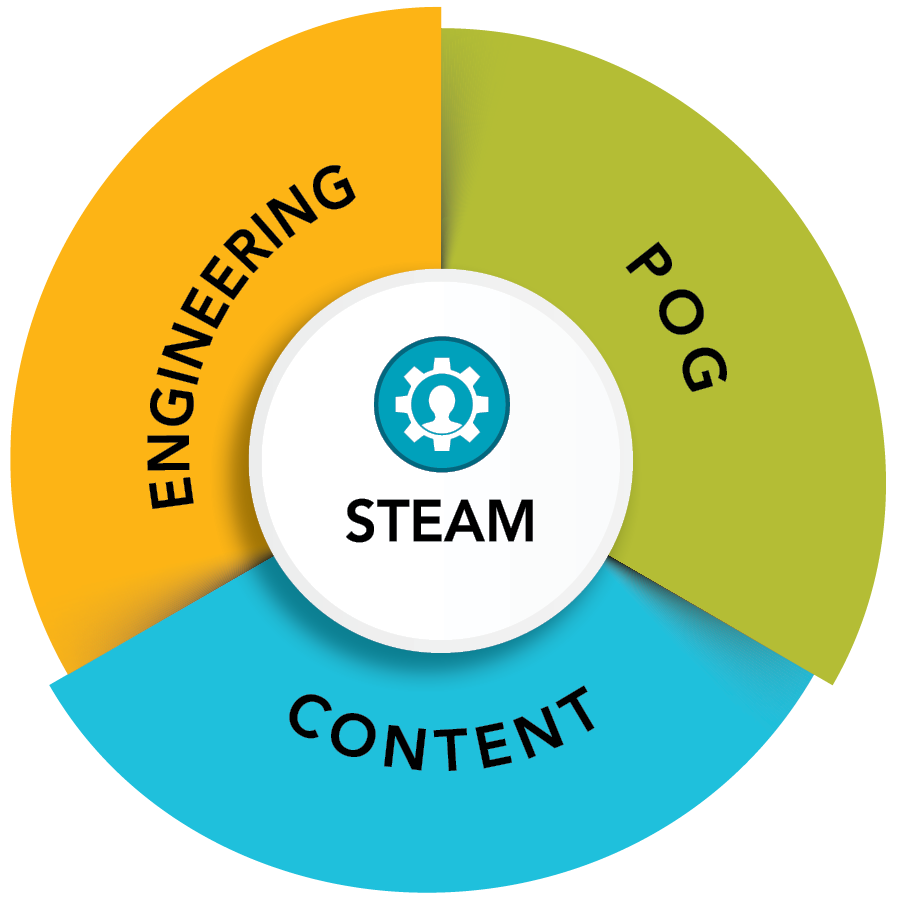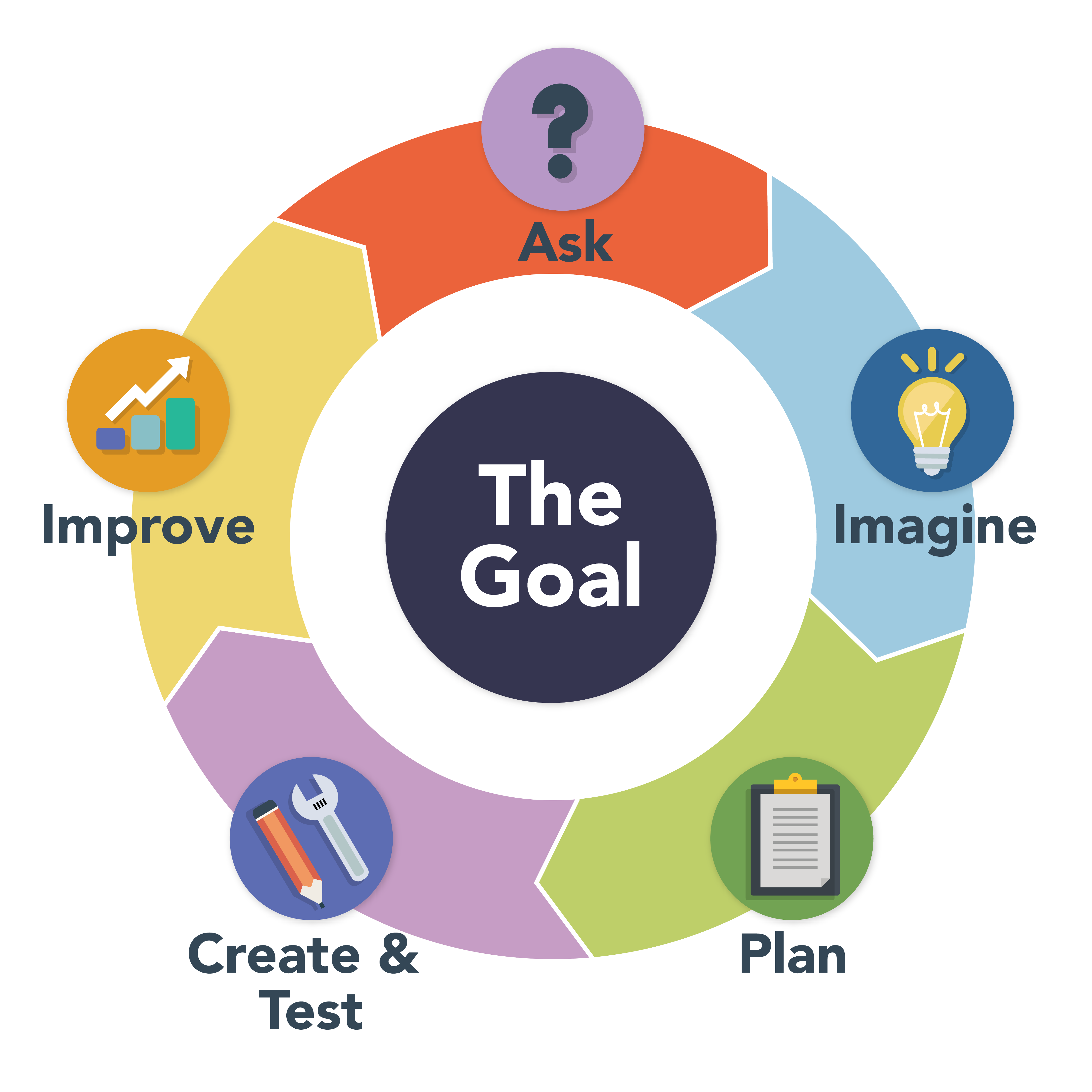STEAM Design Principles
 In STEAM Learning, students use:
In STEAM Learning, students use:
- Engineering Practices
- Content Knowledge
- Portrait of a Graduate (POG) Attributes
...to deepen their learning and POG growth.
 Engineering Practices
Engineering Practices
STEAMbuilds engineering practices* to prepare students for academic and career success.
- Students define a problemand apply computational thinking to iteratively design and optimize solutions.
- Throughout this user-centered, inclusive design process, students ask questionsand carry out investigations.
- They use data, evaluate information, and develop modelsto make their thinking visible and communicate.
- Students collaborate with peers to critiqueand refine ideas and deepen understanding.
*The Virginia Department of Education Science Standards include engineering practices in all grade levels.
 Content Knowledge
Content Knowledge
STEAMintegration across subjects empowers students to explore real world problems and see themselves in STEAMcareers.
- Students apply scienceconcepts to define and solve problems.
- Technologyand computer science help optimize solutions and bring ideas to reality.
- Engineeringpractices are used across content areas to design and test ideas.
- Artspractices and creative expression enhance designs.
- Mathis used to understand the problem, make predictions, and design solutions.
 Portrait of a Graduate
Portrait of a Graduate
STEAMexperiences accelerate the development of Portrait of a Graduate attributes.
- Students collaboratein groups, ask questions, think critically, and communicatetheir thinking.
- Students persist through challenges to develop resilienceand goal directedskills.
- Students develop creativesolutions to benefit the community.
- In the process, they explore STEAMcareers and develop as ethical and global citizens.


